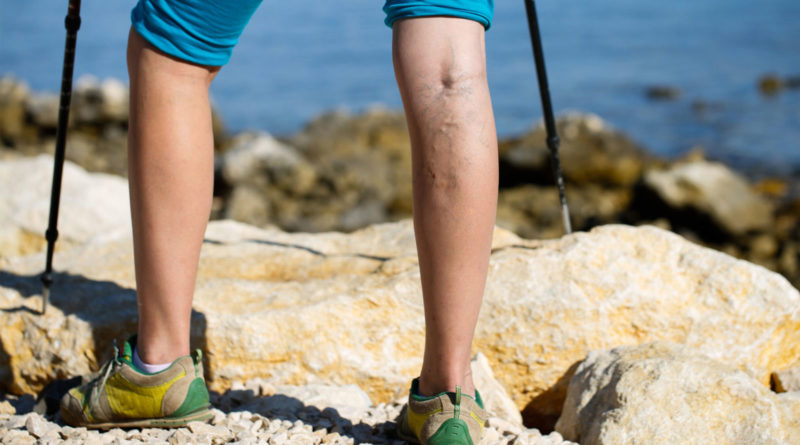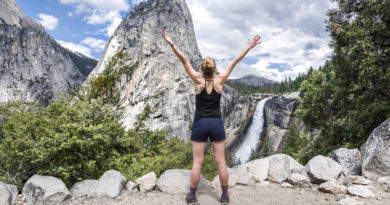How Much Do Feet Swell After Hiking?
All hikers deal with swelled feet sooner or later. New hikers get worried about their swelling and start asking questions like if swollen feet are common among hikers and how much do feet swell after hiking. Well, to their satisfaction, there is nothing to worry about unless they have an underlying medical condition that requires the attention of a qualified physician.
Disclaimer: This article is not medical advice. The causes and remedies mentioned in this article are faced by hikers normally and under no circumstances should be taken as an excuse to ignore medical treatment. Too much swelling along with elevated pain that doesn’t go away even after hours of rest indicates a medical condition. Consult a doctor immediately in such a case.
How common are Swollen Feet Among Hikers?
A little to moderate swelling is common among hikers depending on the distance and how tough the hike is. Swollen toes, ankles, and legs can be experienced after a long hike. Some muscle soreness may also be experienced in the feet. However, this condition should go away after a few hours of rest.
There are many factors that cause swelling in feet as mentioned further in this article. However, if the swelling is too much and doesn’t go away after hours of rest then there is an underlying medical condition that requires the doctor’s attention. It is important to be able to differentiate between the type of swelling that is normal after a tough, long walk and too much swelling that doesn’t go away quickly.
Causes of Swollen Feet
There are many causes of foot swelling after a hike. Here are a few of these:
Peripheral Edema
This is one of the most common causes of swelling among hikers and athletes alike. Peripheral edema is a condition in which fluid escapes into the tissue during exertion of force, that is, hard work like exercise or long-distance walking.
The blood flow to the muscular exerting force is increased which causes the blood vessels to expand and dilate. Due to the porous nature of the blood vessels, fluid escapes from the blood vessel into the surrounding tissue causing temporary swelling.
This condition is nothing to worry about and it is completely harmless. The best way to find out if you have peripheral edema is to elevate your legs high above your head and the swelling should go away within a couple of hours.
Stress-Induced Swelling
This is another common condition among hikers and athletes. When muscles overwork, they swell. The medical term to define this condition is Delayed Onset Muscle Soreness. The concept is that muscles get micro-injuries during hard work. When the body starts the repair work, it causes swelling in the tissue.
This condition might take a little longer to get better depending upon how habitual you are of hard work and how often you do it. People who regularly exercise and participate in demanding activities experience this condition a lot less.
Excess Weight
Gravity is a cruel mistress that punishes if you carry extra weight. It accelerates the process of peripheral edema causing the fluid to pool in the tissues of the feet and ankles. Make sure you only pack the necessary gear. If you are overweight, then try burning some fat.
Tight Gear
Tight boots, tight pants, or tight undergarments can cause swelling in the feet and legs. It restricts the blood flow in these areas causing swelling. Loose-fitting gear allows blood and air circulation which reduces the swelling.
Hyponatremia
This is more of an extreme condition that is unlikely to happen. The human body doesn’t absorb water like a sponge. It requires salts to do that. People who are familiar with the concept of osmosis can understand this.
Hyponatremia occurs when sodium levels in the body drop due to inadequate intake followed by a lot of water intake which releases water into the tissue causing the body to swell. If your food and water intake are normal throughout the hike, then this condition is highly unlikely to occur.
Medical Conditions
There are some medical conditions that also cause swelling in the body after a lot of force exertion. Conditions like hypertension and other circulation problems or problems with the lymphatic system can cause swelling. These conditions require immediate medical attention. Similarly, swelling in only one foot also indicates a medical problem.
How to Prevent Swollen Feet while Hiking?
There are certain steps that can be taken that can prevent the onset of swelling in the feet.
Take off your Shoes
Make it a habit to take off your shoes if you are making a stop for more than 10 minutes. This gives your feet fresh air to breathe and also allows circulation after they come out of those tight shoes.
Relax your Toes
Wiggle your toes in the shoes every few minutes. This will keep the toes relaxed and allow blood circulation. Be aware of yourself if you clench your toes in the shoes, especially, when going downhill. Keep your toes relaxed.
Stretch your Toes
Before going on a hike you can perform a 20-minute stretch routine for your toes, feet, and legs. This warm-up prevents muscular pain during the hike and also prevents swelling during and after the hike. When you take off your shoes, stretch your toes to restore normal circulation in your feet.
Use Trekking Poles
Trekking poles reduce the weight that you put on your feet and ankle joints which is very helpful while going up and downhill. This weight sharing puts less stress on the muscles of the lower body leading to less swelling.
Lose Extra Weight
Carrying extra weight is one of the biggest mistakes on hiking and novice hikers are often guilty of it. Extra weight causes more stress on the feet leading to more swelling. As a general rule, you should only carry a maximum of 30% of your total body weight. If you are overweight, start burning fat and consult a doctor to see if you can go on long hikes.
Snug Fit Gear
The gear you wear should have a snug-fitting. Avoid tight buckles, belts, sports bras, and tight shoes. Nothing should constrict the blood flow in your lower body. The only exception to this rule is the use of compression socks. Compression socks are proven to prevent swelling in the feet. You should experiment if it’s best to wear compression socks for you and if you should take them off whenever you take off your shoes during the hike or not.
Treatment of Swollen Feet after a Hike
If you find yourself having swollen feet, then you can take these steps to treat them:
Raise your Feet
As mentioned above, raising feet above the head cures the swelling caused by peripheral edema. But that is not all, raising your feet can be comforting after a long hike as it takes off the burden from the muscles of the feet.
Stay Hydrated with Electrolytes
Electrolytes are required by the body to absorb water. Sodium, calcium, chloride, magnesium, phosphorous, and potassium are electrolytes that the body needs. But this is no excuse to consume junk food. Eat healthy during and after the hike like bananas, coconuts dates, cherries, raisins, leafy greens, tuna, salmon, etc. On top of that, drink a lot of water to keep yourself hydrated.
Use Ice
Use ice or cold water to numb the pain in your feet. Ice also helps in reducing the swelling in the feet. If you find cold streams during hiking, you can dip your toes in and then wrap them in warm sleeping bags or something. Menthol gels can also be used afterward.
Use Medicines
You can use anti-histamine and anti-inflammatory medicines to reduce swelling and pain. But it is recommended to consult a doctor first. Furthermore, balms and gels can be used to reduce the swelling in the feet.




